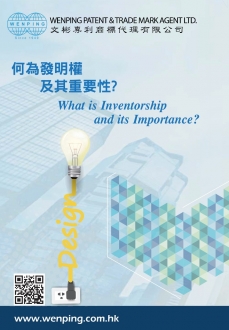Inventorship is one of the key elements for a valid patent. A list of true inventors should be provided when filing a patent application. Otherwise, the patent application will likely be considered defective.
In China, the term "inventor" refers to "any person who makes creative contributions to the substantive features of an invention-creation" in accordance with Rule 13 of the Implementing Regulations of the Patent Law. In Hong Kong, Section 45(1) of the Patent Ordinance provides that the inventor or joint inventors of an invention shall have a right to be mentioned as such in any patent granted for the invention. Inventorship is rather easy to determine when it comes to a sole inventor who independently creates the whole invention by his own effort without the aid of others. However, in reality, the invention is very often made by a group of people who will form a joint inventorship. That means each of inventors has made certain degree of inventive contribution to the invention, no matter they physically work at the same place or not.
The determination of inventorship may be "case-specific". Basically, one can be considered as an inventor if he or she has made an effort on the inventive aspect of the invention. In the US, generally speaking, the inventor is someone who contributes to at least one claim of the patent. Although the claim-based approach is not a fundamental definition of inventorship and does not stand on some occasions, it can still be used as a preliminary reference to decide whom the inventor is.
In some scenarios, applicants may improperly record wrong individuals as inventors in their patent applications. For instance, team supervisors, company directors, investors, technicians or those who merely give advice to the true inventors are often mistakenly added into the list of inventors to be recorded on a patent application. Furthermore, administrators in companies who merely provide directions of research and development are not regarded as inventors. Research technicians who merely assist in doing routine work are not considered as inventors either, even though they have put a substantive amount of effort into the invention.
It is worth noting that patent inventorship is not equivalent to patent ownership. Inventorship is to be determined and finalized at the very beginning of the patenting process, while patent ownership can be transferred at any time after a patent application is filed. In essence, being the inventor confers to ownership of his invention, but there are exceptions. A common exception is that the invention made by an employee in the context of employment should belong to the employer. Same logic applies when the employee made the invention by receiving technical and other forms of assistance from the employer. Nevertheless, it is recommended for the employer to arrange corresponding agreement or assignment to guarantee the ownership of the patent before any patent application. An incorrectly identified inventor or an omitted inventor may bring about some negative consequences and even invalidate the patent.
To avoid disputes arising from the ownership of a patent, concerned parties should take some time to identify and confirm the true inventors prior to filing of a patent application.


